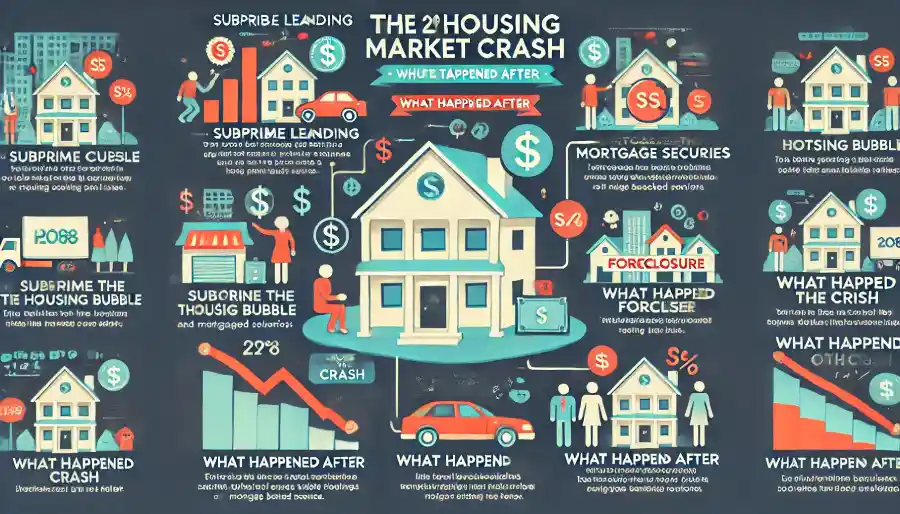Which Statement Best Describes the Main Cause of the 2008 Housing Market Crash in the United States?

The 2008 housing market crash happened because banks gave risky home loans (called subprime mortgages) to people who couldn’t afford to pay them back. These loans were bundled into investments that seemed safe but were actually very risky.
When home prices started falling in 2006, many people couldn’t pay their loans, and banks lost a lot of money. This caused a financial crisis that affected the entire world.
Let’s look at which statement best describes the main cause of the 2008 housing market crash in the united states? and what we can learn from it.
The Housing Boom: What Happened?
In the early 2000s, home prices were rising fast, and many people thought buying a house was a great investment. The government kept interest rates low, which made it easier for people to borrow money to buy homes.
- Home Prices Increased: U.S. home prices went up by 124% between 1997 and 2006.
- Many people took out subprime mortgages: loans given to people with poor credit or little money to put down.
Why Did It Crash?
The housing market crash was caused by several factors working together:
Subprime Lending and Bad Loans
Banks started giving out a lot of subprime loans. These were high-risk loans with low initial payments that increased later. When payments went up, many people couldn’t afford their mortgages, and they lost their homes.
- By 2006, 20% of new mortgages were subprime.
- 25% of subprime borrowers had stopped paying by 2008.
Securitization: Bundling Bad Loans
Banks bundled these risky loans into mortgage-backed securities (MBS) and sold them to investors. People thought these were safe, but they were actually full of risky loans. When homeowners stopped paying, these investments became worthless.
The Events Leading to the Crash
Housing Prices Stop Growing
Home prices hit their peak in 2006. When they started to drop, people who bought homes at high prices couldn’t sell them for enough money to pay off their loans. This caused a wave of foreclosures.
- Home prices fell by 18% between 2007 and 2008.
Lehman Brothers Collapse
One of the biggest banks, Lehman Brothers, went bankrupt in 2008 because it had invested too much in risky mortgages. This caused panic around the world.
- Lehman’s collapse was the biggest in U.S. history, with $600 billion in losses.
What Happened After the Crash?
Foreclosures and Lost Homes
Millions of people lost their homes. By 2010, nearly 3 million homes were in foreclosure.
Global Recession
The crash spread to other countries, causing a global recession. Millions of jobs were lost, and economies around the world shrank.
- Unemployment in the U.S. reached 10% by 2009.
What Have We Learned?
Stronger Financial Rules
One lesson from the crash is that we need better financial regulations. Today, banks must follow stricter rules to avoid risky loans.
Housing Bubbles Can Be Dangerous
We also learned that housing bubbles—when home prices rise too fast—can be dangerous. It’s important not to let prices get out of control through speculation.
Conclusion: The Main Cause of the 2008 Crash
So, which statement best describes the main cause of the 2008 housing market crash in the United States? It was the risky lending of subprime mortgages and poor financial regulation. When people couldn’t pay back their loans, it led to a housing bubble burst that affected the entire economy. Understanding what happened can help us avoid a similar crisis in the future.




